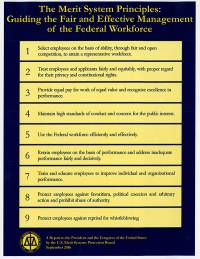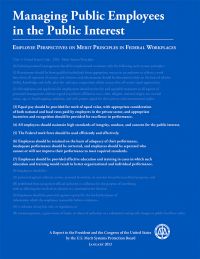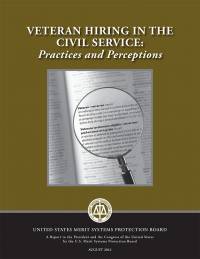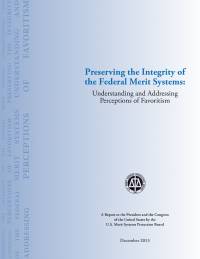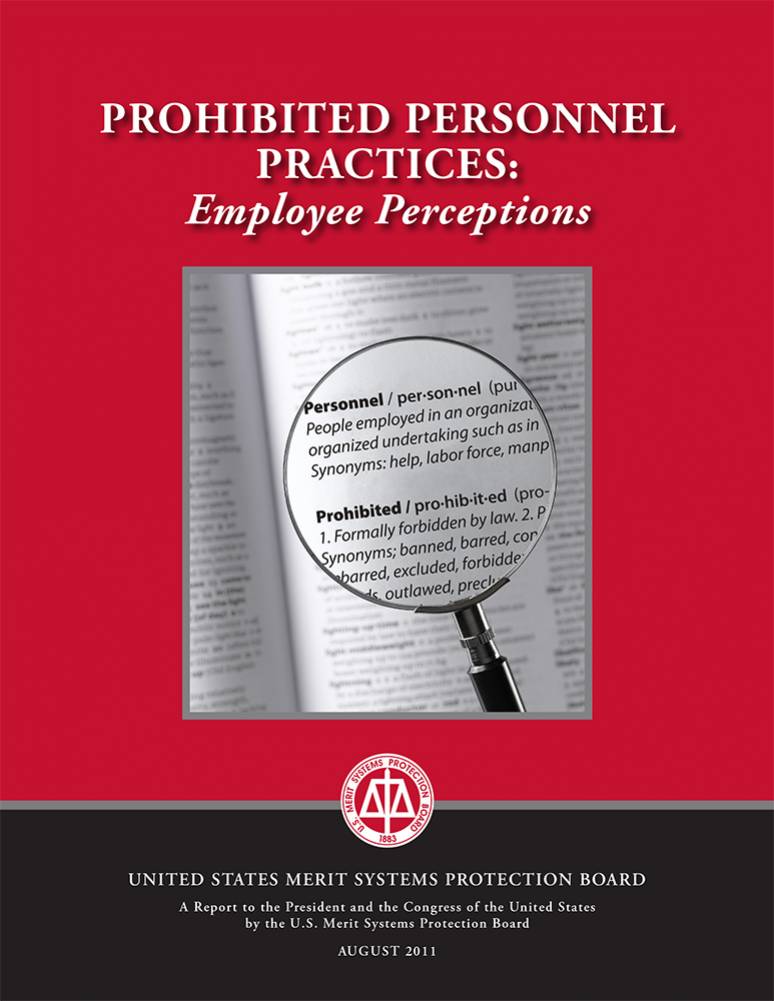
In this report MSPB describes what each PPP means as a practical matter, how frequently Federal employees perceive each practice occurring, and the consequences for an agency when its employees believe that management is committing one or more PPPs. In addition, relying upon data from Merit Principles Surveys conducted between 1992 and 2010, this report explains that perceptions of many PPPs are at an 18-year low. However, the report also demonstrates that agencies should be vigilant to prevent the occurrence of PPPs, or even the perception that PPPs are taking place.
Prohibited Personnel Practices – 5 U.S.C. § 2302(b) i
Executive Summary iii
Findings iii
Recommendations iii
Introduction 1
Purpose 1
PPPs and Board Authority 1
2010 MPS Methodology 3
What Are the PPPs? 5
Discrimination—5 U.S.C. § 2302(b)(1) 7
Considering Recommendations—5 U.S.C. § 2302(b)(2) 8
Coercing Political Activity—5 U.S.C. § 2302(b)(3) 9
Obstructing Competition—5 U.S.C. § 2302(b)(4) 10
Influencing a Withdrawal From Competition—5 U.S.C. § 2302(b)(5) 11
Granting an Advantage—5 U.S.C. § 2302(b)(6) 12
Nepotism—5 U.S.C. § 2302(b)(7) 15
Whistleblower Retaliation—5 U.S.C. § 2302(b)(8) 16
Other Retaliation—5 U.S.C. § 2302(b)(9) 19
Other Discrimination—5 U.S.C. § 2302(b)(10) 20
Veterans’ Preference—5 U.S.C. § 2302(b)(11) 21
Violating Rules That Implement a Merit System Principle—5 U.S.C. § 2302(b)(12) 23
PPP Perceptions and Trends 25
Perceptions of Most PPPs Are Declining 27
Discrimination 27
Coercing Political Activity 29
Obstructing Competition 30
Influencing a Withdrawal From Competition 30
Granting an Advantage 31
Nepotism 32
Whistleblower Retaliation 32
Other Retaliation 33
Perceptions Low for PPPs With No Longitudinal Data 33
Bystanders and the Business Case 35
Conclusion 39
Appendix A: Merit System Principles – 5 U.S.C. § 2301(b) 41
Appendix B: MSPB’s Engagement Scale Questions 43
Federal employees, their supervisors, agency management, union personnel, especially Human Capital officers and employees across the U.S. Federal Government may be interested in this report. Additionally, members of Congress, and Federal managers within the Office of Management and Budget, and Office of Personnel Management that is responsible for policy making authority may find this guide helpful as a reference with human resources and civil service matters. Additionally, students pursuing research for courses within these fields, especially public administration, human resources, employment law, organizational development, and industrial-organizational psychology may find this primary source document that deals with civil service issues helpful for assignments.



